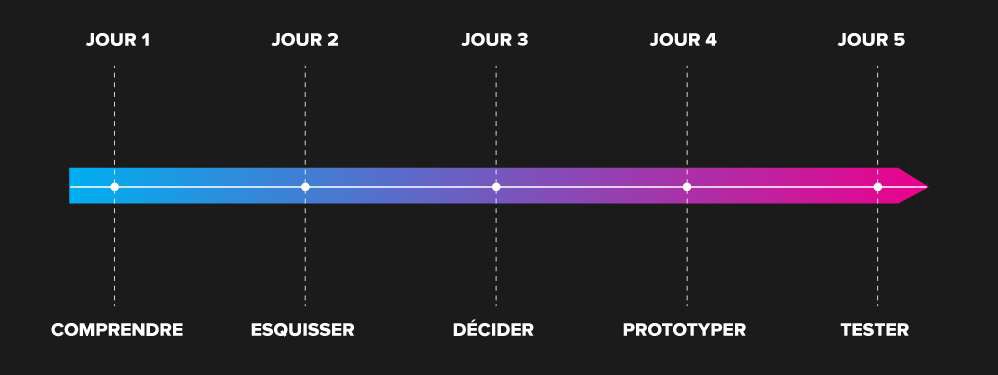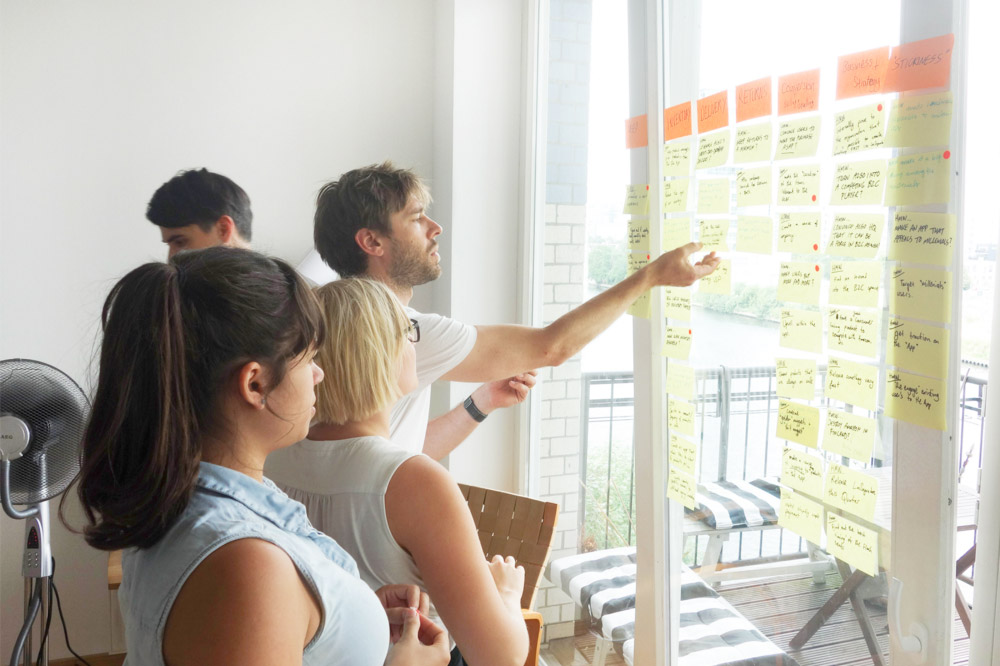One of the design thinking tools, design sprint is an innovative methodology for validating a prototype in just five days. This concept means you can launch a “Minimum Viable Product,” at minimal risk and cost, using design thinking and user-centred design.

Devised by Google Ventures, Design Sprint is used to design, tester and validate a prototype in five days. The idea is to create faster, more precise product design cycles by aligning teams under a shared vision and limiting risks and costs.

The ultimate goal is to develop the best possible prototype within the time allotted and leverage the user experience in order to offer innovative digital services and ensure user loyalty. This UX design approach guarantees adoption and success for digital transformation projects.
What is Design Sprint?
Design Sprint uses design thinking and user-centred design in a practical, pragmatic way. It uses a five-step, five-day method with a multidisciplinary team of five to seven people, to get to the point as quickly and efficiently as possible.

This method involves breaking down development into quick phases, or sprints. A sprint is an iterative cycle that keeps risks down to a minimum. “It mainly allows you to reduce risks and refocus your project if needed,” explain Maxime Charpentier and Arthur Fourniol in their recent white paper, Prototips (in French) on the subject.
After the client brief, the Product Manager identifies the features the product should have and submits the provisional specifications to the team. “The team then decides what to do and in which order, and draws up a schedule. Before each sprint we organise a planning meeting,” says the white paper. “During the sprint we use a table with three columns: to do, in progress, done. At the end of each sprint we test the benefits of each feature with the Product Manager. We do a demo of what we’ve created, and the recipient (the client, typically) confirms or not that the feature works the way they want.”
The success of Design Sprint thus depends on productivity-oriented time management, a balance between individual and team work, creativity and interacting with users. This agile method is the first step of a project that will subsequently be developed if feedback is positive, or if not – scrapped at minimal cost. It can then be taken up again in future sprints until a more conclusive user experience is achieved.

Initially run by Jake Knapp, a Partner at Google Venture, design sprints have since been used for digital successes such as Blue Bottle Coffee, Slack, Airbnb, Flatiron Health, Uber and Nest. Sprintstories.com, run by Google Venture, features over 150 examples which illustrate the method.

















